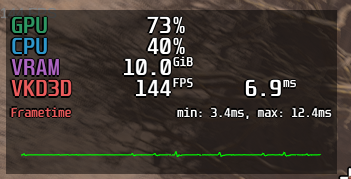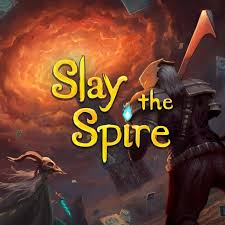As soon as this game launched on Kickstarter, I backed it. I had discussed before with my friends that I would love for a good way to play Slay the Spire cooperatively. Yes, there are mods for the videogame which introduce co-op, but you're playing a multiplayer solitaire game. You aren't really interacting that much. The boardgame implements co-op in a really nice, interactive and meaningful way.
Context and bias
I think it's important to put a big disclaimer that I am heavily biased towards this game. I love the Slay the Spire videogame, I beat A20 with every character and have more than 500 hours playtime. I was extremely hyped to play the boardgame.
These initial thoughts were gathered from a ~~single play~~ two plays in Ascension 0 (no heart), all players were experienced StS gamers (A20 with at least 1 character) and each act took around 2 hours). Yeah, we played the game for more than 6h :P
TL;DR
First impressions score: 9/10
Positives:
-
It really feels like Slay the Spire
-
Basically zero downtime
-
Upkeep is very low
-
Randomness is VERY WELL implemented
-
Really fun
-
The box is very nice, included insert is just ok but gets the job done
Negatives:
-
It takes like 2 hours for experienced players to play a single act, I can't imagine how long it would take for first timers
-
Sleeving/Unsleeving cards to upgrade them is not great
-
Sleeves are included, but they're very low quality
-
The character miniatures are very low quality
The game loop
Slay the Spire is a deck builder game. You start with a very basic and weak deck of cards. Throughout the game you will acquire new cards, upgrade them, get relics, potions and hopefully remove a few of your basic cards. The goal of the game is to move through map and eventually defeat the final boss.
You start the game at the base of the map, where you'll fight some basic monsters. After beating the encounter you can navigate to one the 3 randomly generated map paths, whatever one you feel better suits your team needs.
Each player has a designated row and a monster (and possibly its minions) will be spawned in from of each player.
At the start of your turn you draw 5 cards and set your mana to 3. Each of your initial cards have a mana cost from 0 to 2 and you can play them however you like. There is no turn order, players can play or coordinate their actions as they please. Your attack cards can attack any monster, regardless of their row. Your defense cards usually target yourself, though some allow you to support your friends. After every player has player their cards, every remaining card is discarded and now the monsters will have their turn.
The monster turn is usually very simple, they just attack the player in front of them and it's done. The players can draw 5 cards and play again. If a player dies, it's game over. Otherwise, the game continues until all monsters are defeated.
Each monster awards a set of rewards to the player in front of them. Typically you get some coins and a new card. You reveal 3 new cards and you can add one of them to your deck. The new cards are generally better than your starter ones but you can choose to skip it altogether. You can also get potions (a 1 time effect) and relics (passive effects throughout the entire run).
After beating the initial encounter, you select one the map branches and move up. There are several types of encounters: shop, random events, regular monsters, elite monsters... It's cool to decide how to move up thoughout the map considering your current status. Low on health? Lets try to target a resting spot. Doing great? Lets kick some elite ass. Eventually you'll reach the boss and hopefully your deck is now strong enough to beat it.
Differences from the videogame
-
Most stuff works exactly like the videogame
-
Damage has been heavily re-scaled so the math is very easy. Each attack deals 1 damage, for instance. It was never hard to figure out how much damage you were going to deal or take.
-
Several cards, potions and relics have been changed to reduce complexity and upkeep.
-
Nothing ticks down at end of turn. Poison never ticks down, for instance. You don't lose focus at end of turn. Upkeep is minimal.
-
Vulnerable works a bit differently. Your next attack deals double damage against a vulnerable foe, then you remove one vulnerable "token". If you applied 2x vulnerable, then your next 2 attacks deal double damage.
-
Weak means you deal 1 less damage on your next attack.
-
Defect (3rd character) orb order doesn't matter, you can evoke any orb you want. You can also target anything you want, it's not random.
-
Dark orbs deal 3 damage + 1 damage for each power in play, to avoid upkeep
Randomness
Every randomness in the game is performed with a die roll. At the start of the turn you roll a die and every random effect for that round (your turn + monster turn) uses that die roll. You don't roll the die for every single effect. You roll once and apply it to everything.
Things that interact with the die:
-
Some relics perform automatically on a die roll (eg: deal 4 damage when 4 is rolled)
-
Some monster attack depends on the die roll (eg: monster might attack on roll 1-3 and buff up on roll 4-6)
-
Some cards do different things depending on the die roll
The thing I like about this is that it's very low maintenance, you just roll the die once per round and you know exactly what is going to happen for the entire round. This is not something like "I'm going to attack, roll the die aaaaaand... I missed". At the start of the turn you know exactly how everything is going to pan out. I love that.
First impressions
Boardgames based on videogames are usually awful. I don't think I have ever enjoyed a boardgame adaptation. They're usually very fiddle, with tremendous amount of book keeping and upkeep effects. I was very hyped with Slay the Spire but also very concerned that this would be the case. The videogame takes care of a ton of stuff for you. I don't want to keep track of my dark orbs or to apply double damage after 10 attacks. That's just not fun to track.
I'm happy to say that Slay the Spire, the boardgame is amazing. I think the designer paid a tremendous amount of respect to videogame, it really does feel like Slay the Spire. All the monsters, their attacks, the relics, everything works like videogame. It does a really good job at making you feel at home. However, the designer also spent a tremendous amount of effort to reduce how much stuff you need to keep track off. Upkeep was usually just dealing poison damage and orb damage, that's it. No tickdowns, no doubling, no keeping track of attacks, claws or cards used.
The cooperative aspect of the game is very nice. You can really cooperate and complement your friend's turns. It's fun to coordinate which monster to kill first and managing everyone's defense. The game makes a good job at creating tension, especially in the act 2. You have that feeling you have no chance but then actually pull it off with minimal losses. And most importantly: it really does feel like a team effort. It doesn't feel solitaire.
Each act took us 2 hours but it didn't feel like 2 hours. The game felt fast paced. Since turns are simultaneous, the downtime between turns was basically non-existent. The monster's turns are VERY fast so you're back to the action really quickly.
So why is this game not instantly a 10/10? My biggest issue with the game is actually its length. 2+ hours per act is a lot. The game tells you that you can play a single act and also provides a way to start immediately from the second or third act, which is great. However, a full run is going to take you 6+ hours. Personally I don't really like to start/finish a run in the middle of the game, I'll have to get used to it.
Final thoughts
If you love the Slay the Spire videogame and are looking for a similar co-operative experience, this is an absolute no-brainer. Get this game. You need it in your life. I'm really glad I backed it and plan to continue enjoying it with friends.
I'm not big on playing boardgames solo and I honestly see no point on getting this game if you're just going to play solo. The videogame is probably 10x cheaper and you can play an entire run under 1 hour. I would just play the videogame, to be honest.
What if you've never played Slay the Spire? Honestly that's a tough one. I think a big part of the experience is that this feels pretty much like the videogame. While there are some progression aspects in the form of card unlocks and increased difficulties, there isn't much to look forward to. Maybe a game like Aeon's End, which has a campaign like feeling and a story would be something you'll enjoy more. I don't know. Your millage may vary and I'd love to hear the thoughts from someone who had no idea what Slay the Spire was!



Yep, it's a git! :)